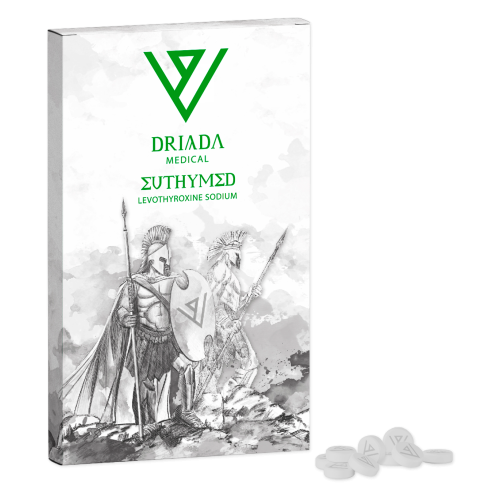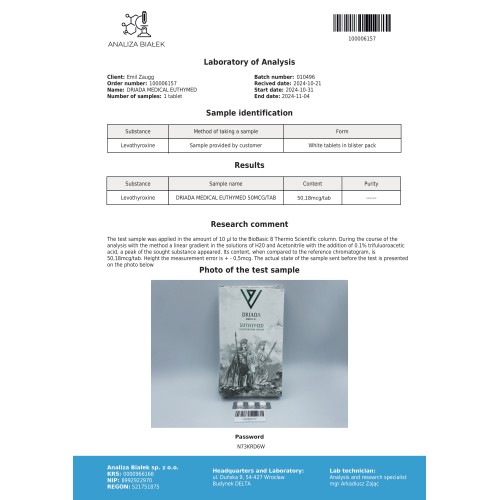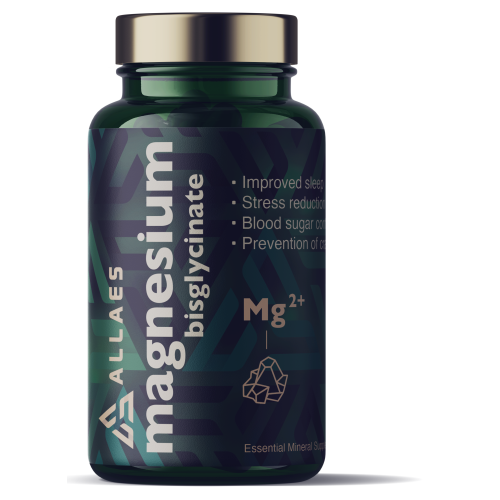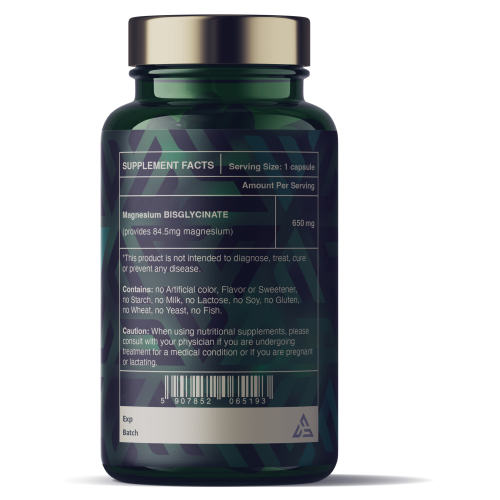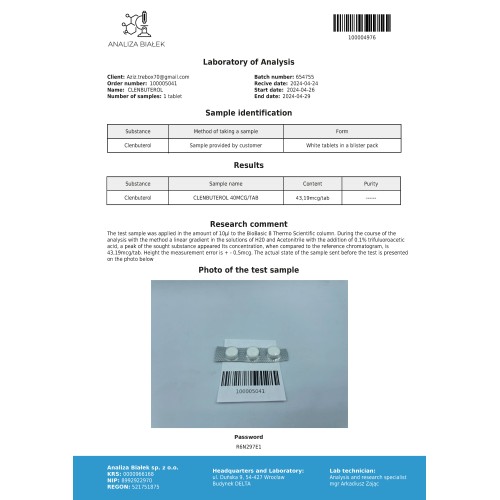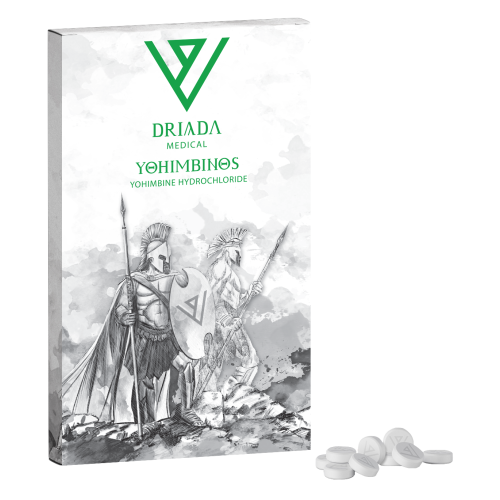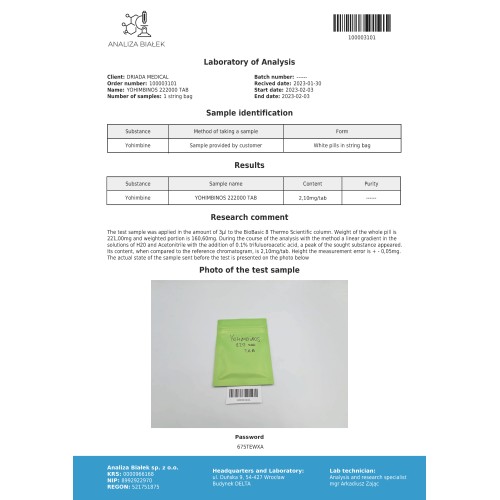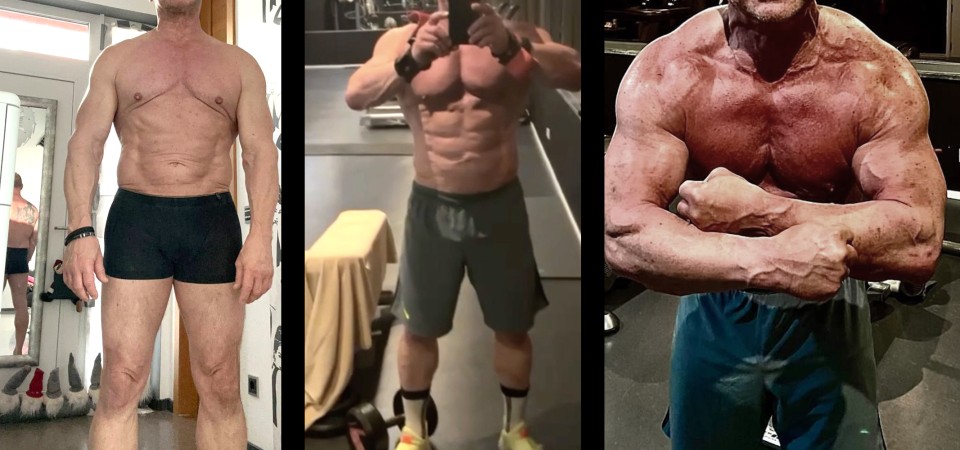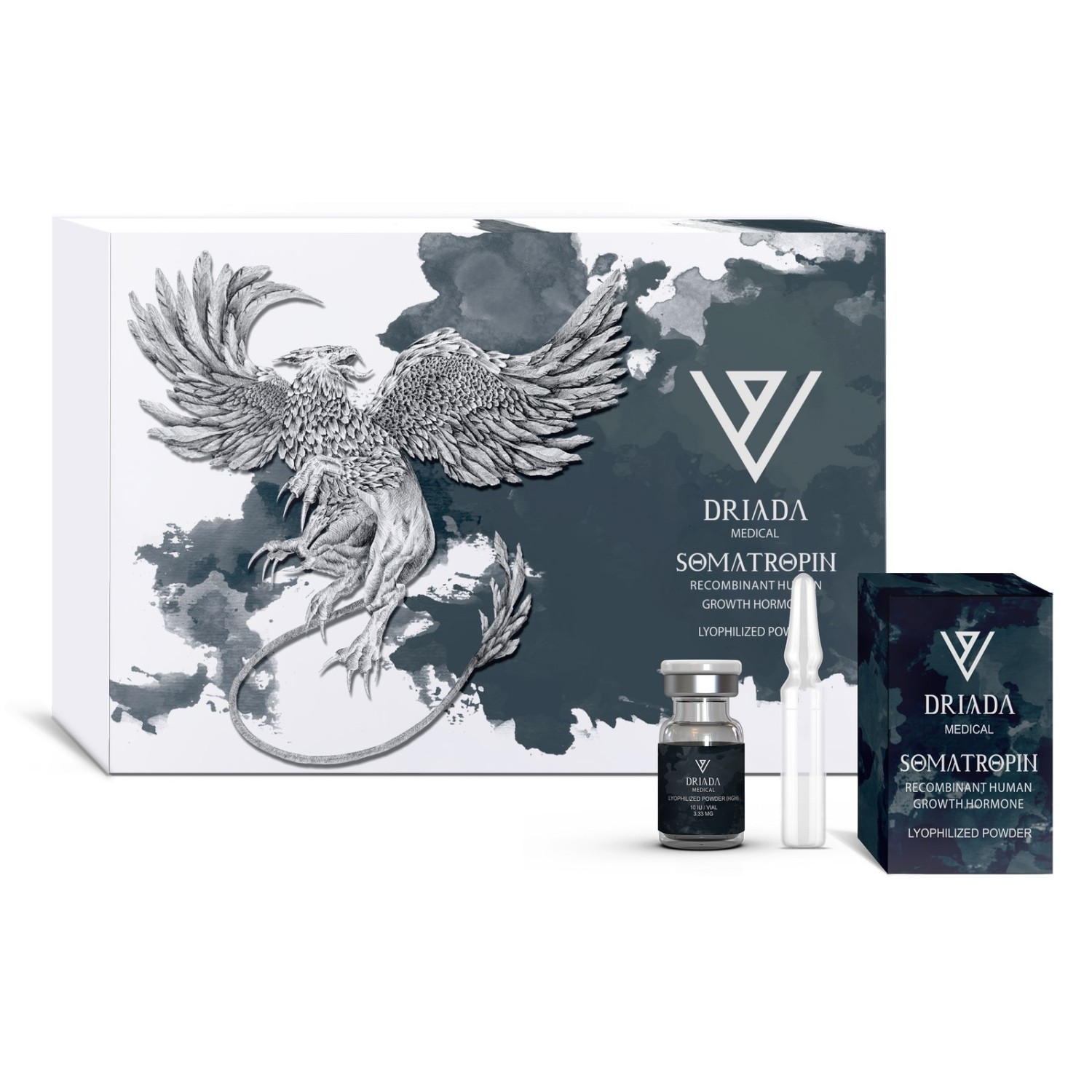
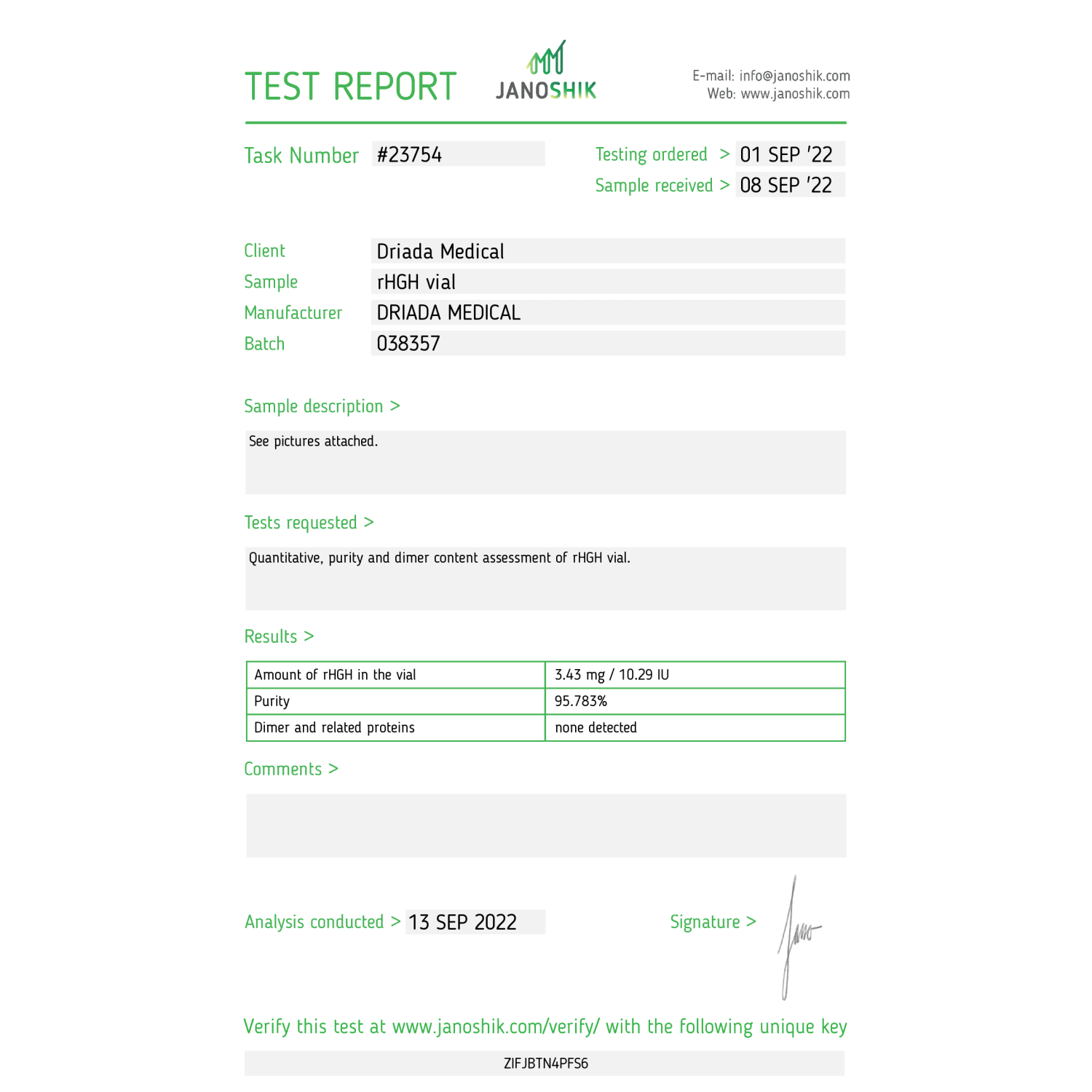
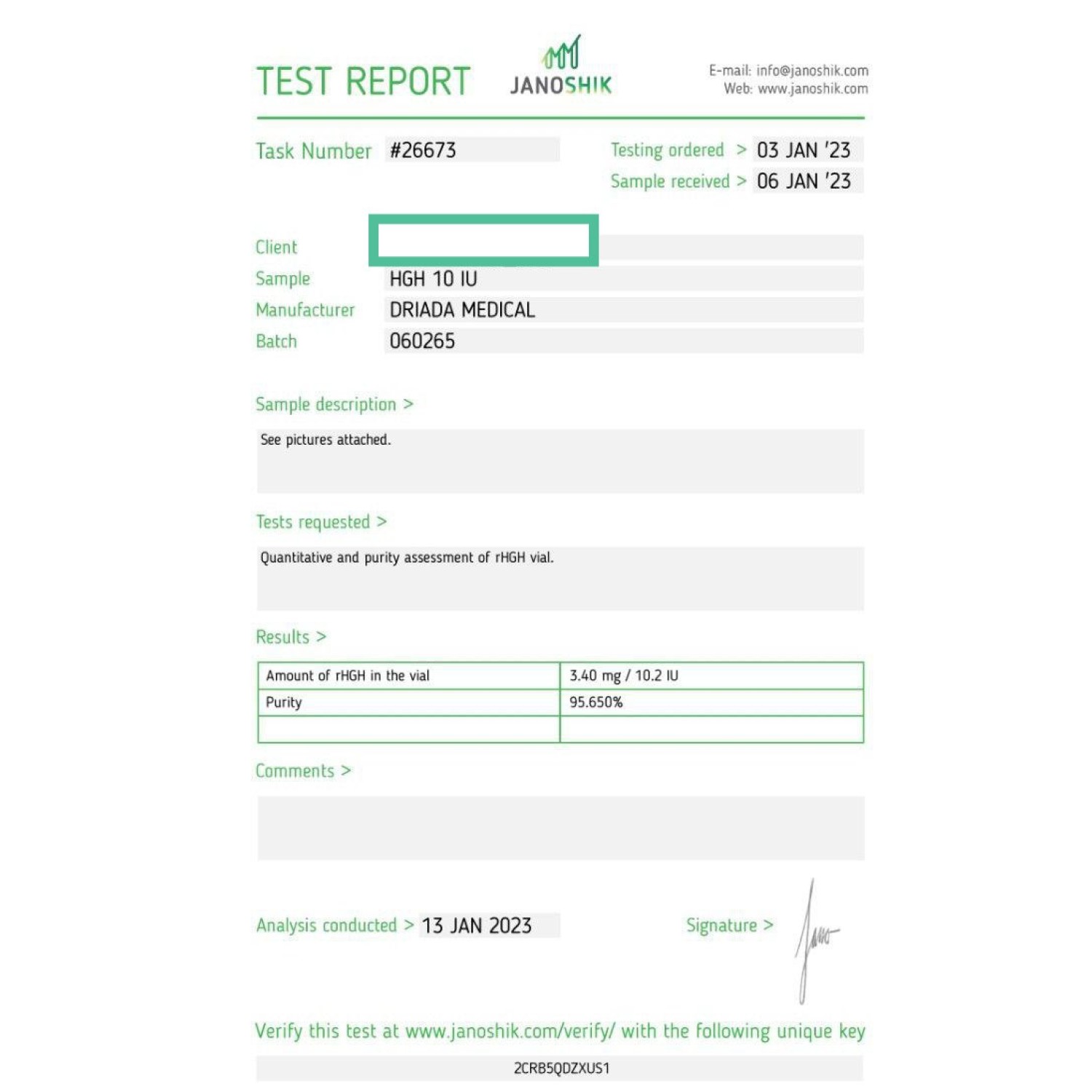
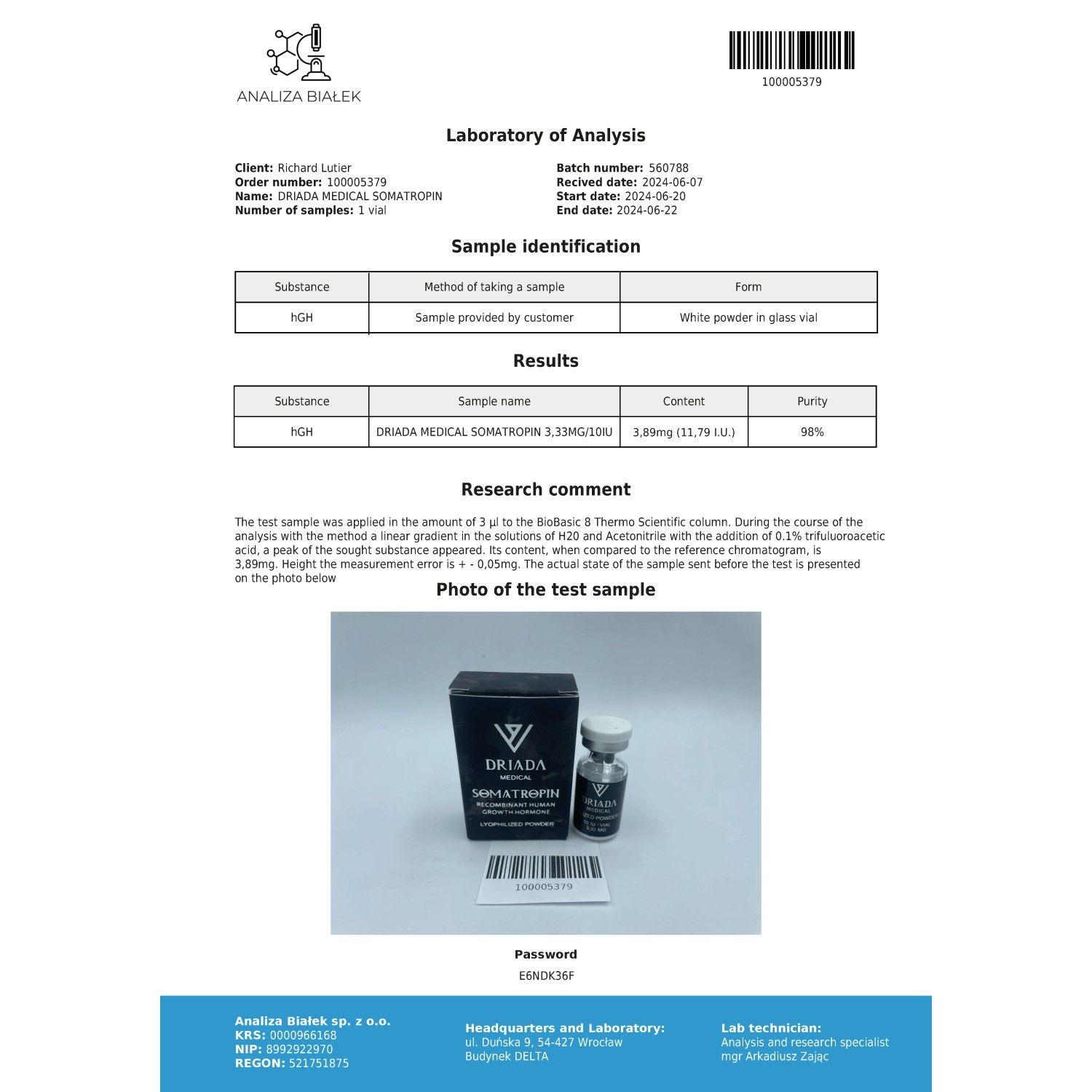
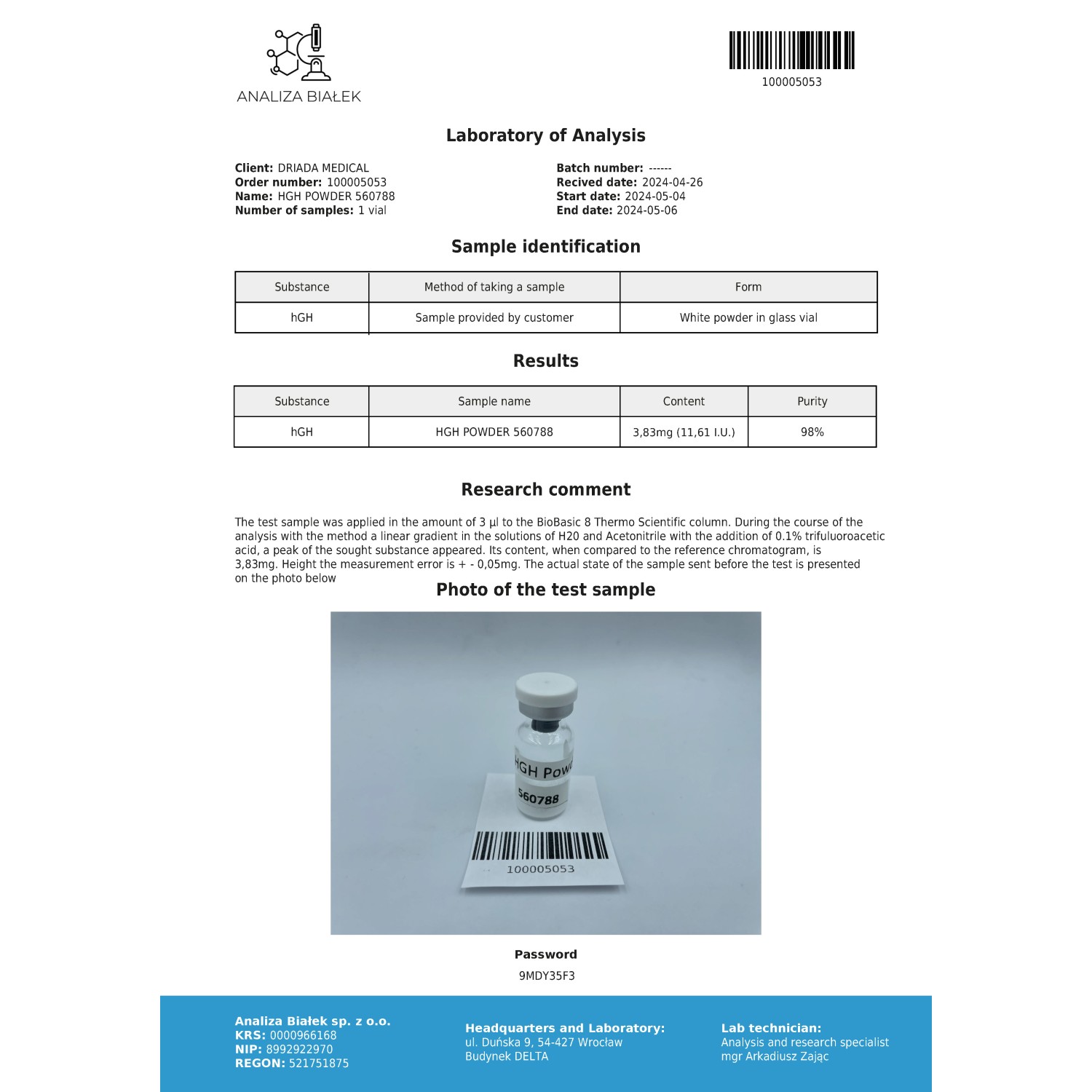
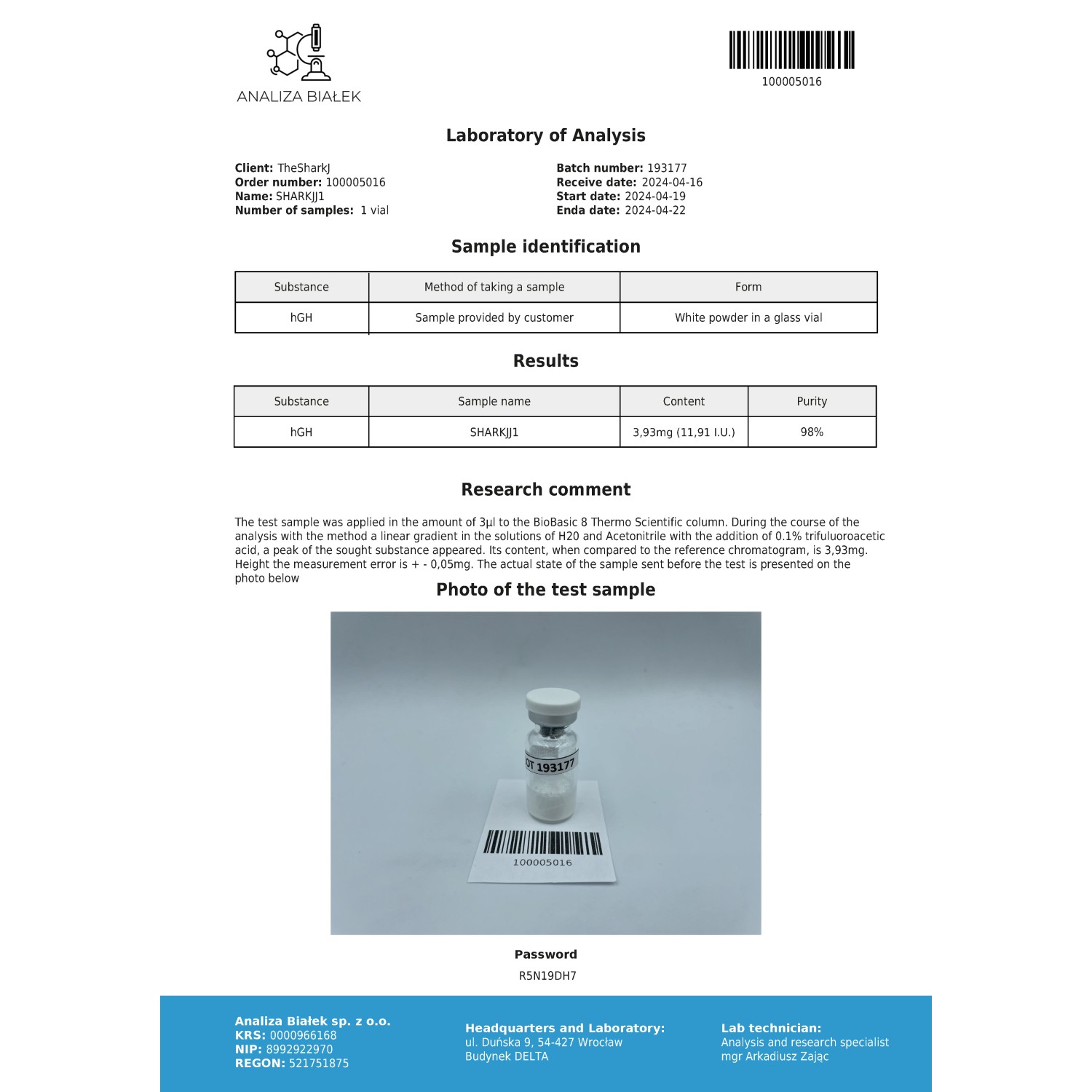






- Stock: In Stock
- Package: 10x vial (10 IU/vial) + water
Recommended with this product
When using growth hormone for weight loss or
View moreGH is usually taken before bed, where it
View moreClen + Yohimbine cycle: A classic combination that can be
View moreClen + Yohimbine cycle: A classic combination that
View moreWhat is Growth Hormone?
Somatotropin, also known as human growth hormone (GH), is a vital peptide hormone synthesized in the anterior lobe of the pituitary gland. It plays a crucial role in enhancing protein creation, managing how the body processes sugars and carbohydrates, aiding in the recovery of tissues post-injury, and ensuring the proper functionality of numerous bodily systems and organs. This hormone is essential for stimulating overall growth, promoting cell growth and regeneration across both humans and animals, and is critical for the developmental stages of life.
GH is central to the development and growth of body tissues and organs, driving the expansion of bones, and modulating the metabolism of fats, sugars, proteins, and minerals, along with maintaining the balance of fluids and electrolytes in the body. It triggers the breakdown of fats in fat cells, boosts the absorption of amino acids, and retains nitrogen in muscles, which supports the preservation of muscle density and vigor. Moreover, GH influences the production of insulin-like growth factor 1 (IGF-1), predominantly in the liver. IGF-1 plays a significant role in growth and metabolic activities.
During the growth phase, the body's production of growth hormone is at its peak, enabling us to progress through developmental stages from childhood to adulthood. The highest secretion of this hormone occurs during infancy and adolescence, with a gradual decrease commencing around the age of 25.
The hormone is lauded for its capacity to augment muscle growth through its anabolic and anti-catabolic properties, by fostering protein synthesis and decelerating its degradation. It is instrumental in diminishing the amount of fat beneath the skin and increasing fat combustion during physical activities, making it highly valued among athletes.
Furthermore, somatotropin regulates carbohydrate metabolism by generating a counter-insulin effect (diminishing insulin effectiveness), which in turn elevates blood glucose levels, providing the body with an energy reserve for physical exertion. It also plays a key role in preventing osteoporosis by enhancing the bones' capacity to absorb calcium, particularly significant during muscle activities.
Impact of Growth Hormone
Growth hormone serves as a crucial mediator, functioning as a pivotal element in the production of insulin-like growth factor (IGF-1), with IGF-1 being responsible for executing the primary effects typically associated with growth hormone. Additionally, growth hormone directly influences numerous bodily functions by attaching to its distinctive receptors.
Growth hormone facilitates several critical biological processes, including:
- Encouraging lipolysis, or the conversion of fat molecules into fatty acids.
- Enhancing cell membrane permeability to various amino acids, thus ensuring the supply of essential "construction materials" to the cells.
- Boosting the body's ability to retain calcium, which contributes to the fortification of bones.
- Fortifying the immune system.
- Promoting the transformation of thyroxine (T4) into triiodothyronine (T3).
- Elevating levels of glucose in the bloodstream.
Regarding its Conversion to IGF-1
While some of the growth hormone's impacts are immediate, a substantial portion of its efficacy is conveyed through the insulin-like growth factor IGF-1 (formerly recognized as somatomedin C). Generated in the liver in response to somatotropin's influence, IGF-1 is instrumental in the growth of the majority of the body's internal organs. In the context of sports, nearly all benefits linked with growth hormone are due to IGF-1's activity. Thus, growth hormone acts primarily as a facilitator, essentially bridging the gap in the synthesis of this secondary hormone. Several effects commonly attributed to growth hormone are, in reality, executed by IGF-1, especially regarding the growth of body tissues.
Additionally, IGF-1:
- Boosts the body's antioxidant levels.
- Combats inflammation.
- Ensures the maintenance of blood sugar and electrolyte stability.
- Contributes to the prevention of heart conditions.
- Enhances cognitive functions, proving particularly beneficial in recovering from strokes.
- Exhibits an anabolic effect, fostering muscle development.
- Speeds up the healing process by augmenting collagen production.
- Strengthens bones through increased calcium retention, thus enhancing bone density.
What Growth Hormone is Used For
Strengthening Tendons and Joints
In disciplines like powerlifting and strength sports, where the robustness of tendons plays a crucial role in performance, growth hormone proves to be immensely beneficial. Interestingly, only a modest amount is necessary for achieving this effect. In team sports and martial arts, which often involve joint and tendon injuries, growth hormone is increasingly utilized for rehabilitation, significantly shortening the downtime athletes need to recover.
Boosting Explosive Power
Growth hormone is also leveraged to enhance speed and explosiveness, particularly beneficial for sprinters and athletes in sports requiring sudden bursts of movement (such as football, hockey, rugby, and various combat sports).
Muscle Mass Gain
An increase in somatotropin levels significantly boosts protein synthesis while inhibiting the oxidation of amino acids. In this process, anabolic steroids and IGF-1 act as growth hormone's synergists. Moreover, growth hormone nearly completely blocks glucose absorption by adipose tissue, even in insulin's presence, directing most glucose towards muscle cells, thereby supporting anabolism and aiding in fat prevention.
Fat Reduction
Due to its strong lipolytic (fat-burning) properties, many bodybuilders and individuals aiming to refine their physical appearance and attain an athletic build turn to growth hormone.
Anti-Aging Benefits
Adult growth hormone deficiency is often linked to the aging process: starting around the age of 40-45, the body's natural production of somatotropin significantly decreases, potentially leading to various issues like deteriorating cholesterol levels, loss of muscle mass, osteoporosis, diminished collagen production, among others. The administration of synthetic growth hormone can offer considerable assistance in these cases.
Dosage
- For anti-aging purposes: 1-1.5 IU daily
- To enhance tendon and joint strength, and aid injury recovery: 2-3 IU daily
- To expedite recovery after intensive exertion: 3-4 IU daily
- For fat burning: 3-6 IU daily
- To boost muscle mass: 6-12 IU daily
Precautions and Contraindications
- Individuals with cardiovascular conditions
- Those diagnosed with cancer
- People with Type 2 Diabetes
Potential Side Effects
While growth hormone is generally considered safe when adhering to prescribed dosages, some users may experience side effects such as fluid retention, elevated blood pressure, and carpal tunnel syndrome, alongside an increase in blood sugar levels. These can include:
- Carpal Tunnel Syndrome
- Fluid Retention
- Higher Blood Pressure
- Reduced Thyroid Function
- Hyperglycemia (high blood sugar)
- Joint Pain (Arthralgia)
Storage and Reconstitution of Growth Hormone
The powder form, or lyophilizate, includes 10 vials of powder alongside 10 ampoules of water for reconstitution. Growth hormone in this lyophilized powder state typically comes paired with a solvent (bacteriostatic water) to facilitate preparation of the solution. Once reconstituted, the growth hormone is maintained in a liquid state. The quantity of solvent required for each unit of growth hormone should be precisely followed according to the guidelines provided in the instructions.
Solvent (Bacteriostatic Water)
In an aquatic setting, growth hormone starts to break down swiftly, partly due to bacteria, which find such moist environments conducive to growth and multiplication. While injection water is sterile, its sterility is compromised the moment its container (often an ampoule, though water is increasingly found in vials or small plastic bottles) is opened. To prolong the sterility of the water, substances like benzyl alcohol or metacresol, known for their potent antibacterial properties, are added. The water thus treated becomes bacteriostatic, effectively keeping bacteria in a "static state" where they cannot proliferate. Within this bacteriostatic milieu, growth hormone can remain stable and resist significant degradation for a much longer period.
How to Prepare the Solution
- Fill the syringe with water. Typically, the vial's contents are dissolved with one milliliter of water.
- Introduce the water into the vial containing the freeze-dried powder. Angle the vial so that the needle grazes the vial's wall. It's important to avoid directing the solvent straight onto the powder. Let the diluent gently trickle down the vial's sides (do not empty it all in one go and do not hurry).
- After all the diluent has been added to the vial with the peptide, carefully swirl (but do not vigorously shake) the vial until the freeze-dried powder fully dissolves, leaving you with a clear solution. The product is now ready for administration. Keep the reconstituted solution refrigerated at 2-8°C for up to 14 days, or at room temperature for 2-3 days.
Storage
The unmixed, dry form can be kept either at room temperature or refrigerated. The lyophilized powder remains stable provided it isn't exposed to direct sunlight (or lights from daylight lamps) and isn't heated. Under appropriate conditions, somatropin in its dry form can last up to 3 years when stored at 2-8°C, and up to 2 years if kept at a temperature range of 15-30°C.
Should the vial containing somatropin be breached, allowing air to enter, the active ingredient will deteriorate relatively quickly outside of refrigeration - within about two weeks, roughly half of its potency may be lost. Hence, if the integrity of the packaging is in doubt, it's advisable to refrigerate the medication.
Meanwhile, the bacteriostatic water provided for reconstitution should be refrigerated consistently at 2-8°C to preserve its effectiveness. If storing growth hormone together with bacteriostatic water, it's best practice to refrigerate the entire kit.
FAQ
Do I need to do post cycle therapy (PCT) after taking Human Growth Hormone?
No, post cycle therapy (PCT) is not required after using growth hormone because it does not influence your sex hormone levels.
Is HGH injection harmful?
HGH injections are administered with a small insulin syringe equipped with a needle up to 13 mm in length, inserted subcutaneously. This method minimizes discomfort, making the injections virtually painless.
How does human growth hormone affect women?
An increasing number of women are turning to HGH for its potential benefits in anti-aging and weight loss. A deficiency in human growth hormone among women typically results from insufficient production by the pituitary gland. Through growth hormone therapy, this condition can be reversed. Symptoms of HGH deficiency include dry skin, hair thinning, increased abdominal fat, and the appearance of wrinkles. Proper levels of HGH can assist women in maintaining a healthy body-fat ratio and skin elasticity. Additionally, balanced HGH levels in women decrease the risk of osteoporosis. HGH injections can also help in normalizing sleep patterns, enhancing skin elasticity, reducing excess fat, and bolstering the immune system.
What should I expect from using Growth Hormone?
Growth hormone is highly sought after in sports mainly for its capability to reduce subcutaneous fat. Furthermore, research indicates that somatotropin usage can lead to an increase in lean muscle mass, connective tissues, and muscle cell volume due to fluid retention.
Is it possible to use growth hormone with anabolic steroids?
Yes, using growth hormone in conjunction with anabolic steroids can amplify the effects of the steroids, making this a common practice among bodybuilders.



